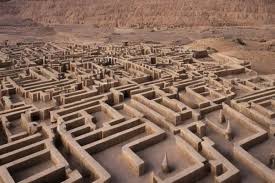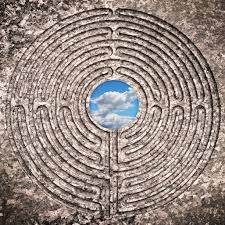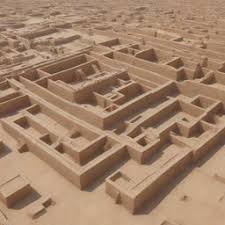Could Hieroglyphs & Ancient Sites Act As 'QR Codes' to Deeper Knowledge or Technology?
- Sahar
- Dec 4, 2024
- 4 min read
When we think of hieroglyphs and the intricate design of the ancient symbols of our ancestors, we often imagine them as mere pictures or artistic representations of language. However, what if we’ve been overlooking something more profound?
What if these symbols were not only a written language, but also an early form of data encoding, much like the QR codes of today—containers of much deeper wisdom, knowledge, and possibly even ancient technology?
The idea that hieroglyphs and different types of sites & crop circles could function as an ancient kind of “QR code” offers a fascinating lens through which to view the advanced nature of ancient civilization and its contributions to modern society.
The Depths of Ancient Kemetic Symbolism
The ancient Egyptian system of writing, known as hieroglyphics, was an incredibly sophisticated form of communication that blended visual imagery with sounds. But hieroglyphs weren’t just a way to record daily transactions or religious texts; they were infused with symbolism and spiritual meaning that spanned the physical, metaphysical, and cosmological realms.
Each symbol, whether a human figure, an animal, or a natural element like the sun or water, carried layers of meaning that went far beyond the surface. For most ancient cultures, the written word was a portal to deeper truths, encoding not only historical events but also metaphysical concepts like spiritual ascension, astronomical cycles, and even advanced sciences.
What if these hieroglyphs functioned similarly to QR codes—with each symbol serving as a gateway to access deeper layers of knowledge and understanding? In this view, hieroglyphs could be a complex system for storing information, much like modern barcodes or digital QR codes, where scanning or decoding the symbols unlocks hidden wisdom, knowledge, and technology.
In ancient Egypt, those who were initiated into the mysteries of the temples and mystery schools may have been given access to a more profound understanding of these symbols, much like how today we can use a QR code to quickly access a website or a hidden file of data.

The Nile Valley—the cradle of ancient Egyptian civilization—could be seen not just as a physical place but as a symbolic reservoir of information, carrying the keys to both earthly knowledge and cosmic truths.
The Nile Valley's Contributions to Civilization and Technology
The Nile Valley, home to one of the oldest and most advanced civilizations in history, was a hub of innovation and knowledge that shaped the course of human civilization. From the creation of the pyramid systems and mathematical principles to the development of medicine and engineering, the ancient Egyptians had a deep understanding of the natural world and the forces that governed it.
Their mastery of mathematics enabled them to build structures that still defy modern understanding, and their knowledge of astronomy allowed them to align pyramids with the stars in ways that continue to astonish scholars.
In the realm of technology, the Nile Valley may have been far ahead of its time. Ancient Kemetic dynasties are credited with a range of inventions, from the shaduf (an early irrigation device) to the first forms of paper—papyrus. But there are hints in the archaeological record suggesting they may have possessed knowledge of electromagnetic energy, advanced metallurgy, and possibly even technologies that are now lost to history.
Could the symbols and writings of the ancient Egyptians contain encoded instructions for technologies that were once used but have been forgotten or deliberately hidden?
Some theorists suggest that ancient Egyptian temples, particularly those dedicated to the gods and goddesses of wisdom, could have housed mechanical devices powered by natural forces, a theory supported by the enigmatic pyramid texts and other ancient writings. It’s possible that the hieroglyphs we see on the walls of temples and tombs weren’t simply decorative or ceremonial but were also encoded blueprints for harnessing the forces of nature—much like a QR code provides access to digital blueprints or resources today.
The Return of Ancient Wisdom?
The idea that sacred symbols and sites could serve as ancient QR codes opens the door to an exciting possibility: the return of lost knowledge. As new technologies—such as artificial intelligence, machine learning, and advanced scanning techniques—advance, we are more capable than ever of uncovering secrets that have long been hidden in plain sight.
Scholars are increasingly able to decipher ancient texts using sophisticated software and algorithms, and archaeological discoveries continue to reveal objects and sites that challenge our understanding of the ancient world.
Perhaps we are on the cusp of rediscovering forgotten technologies or deeper layers of wisdom that have been encoded within these symbols for millennia.

New methods of scanning, 3D imaging, and digital archaeology might someday allow us to "scan" ancient sites and objects in ways that reveal lost blueprints for technologies or ancient scientific principles once thought lost. Could the pyramids, with their intricate geometry and mysterious internal structures, be a manifestation of this hidden knowledge? What if the hieroglyphs on their walls aren’t just telling stories but are actually unlocking a portal to a deeper, perhaps universal, understanding of the cosmos?
Visualizing The Possibilities Ahead
In many ways, the exploration of hieroglyphs as ancient QR codes is not just a metaphor but a call to action. As we venture into a future increasingly defined by technology, we are also beginning to rediscover the ancient wisdom that has always been at our fingertips—if only we had the right tools to access it.
Just as we decode modern QR codes with our smartphones to access information instantly, perhaps the symbols of the Nile Valley hold unlockable keys to ancient technologies, spiritual wisdom, and new ways of interacting with the world.
As we continue to advance technologically, we may find ourselves not just looking forward, but also reaching backward into the rich, untapped reservoir of knowledge that ancient civilizations have left behind. The question is not whether there is more wisdom to be discovered, but when we will be ready to decode it—and whether the tools to unlock it will be in our hands, as they once were in the hands of our ancestors


































Comments